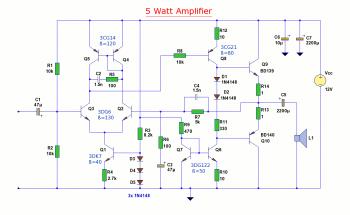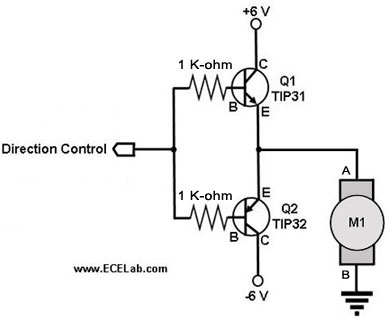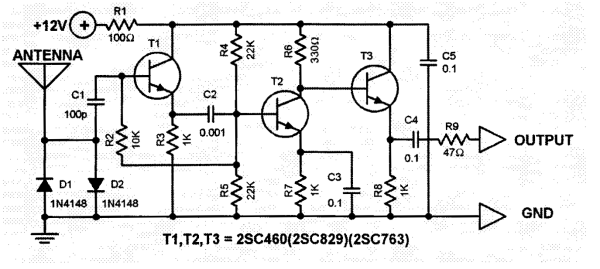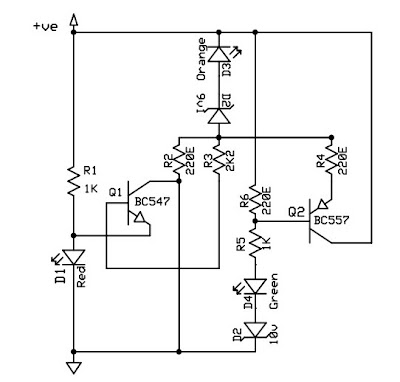
Photoelectric controller circuit immunity
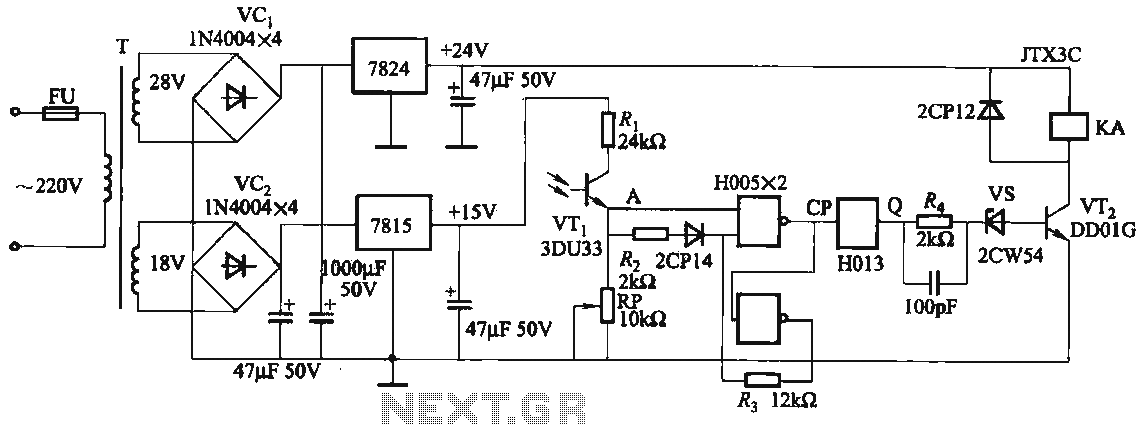
The circuit features a robust anti-jamming capability, making it suitable for demanding applications. It includes a phototransistor (VTi), a Schmitt trigger (H005), a JK flip-flop (H013), a power amplifier circuit, a relay (KA), and various actuators and other components. The operation of the relay (KA) is dependent on the light received by the phototransistor (VTi); the relay engages when the phototransistor detects light and disengages in the absence of light. An adjustment potentiometer (RP) is utilized to ensure that the high potential point (A) exceeds 8V while the low potential point remains below 7V, allowing the circuit to function correctly.
The circuit design incorporates a phototransistor (VTi) that serves as a light sensor, detecting ambient light levels. When light is present, the phototransistor conducts, triggering the Schmitt trigger (H005) to provide a clean digital signal. This signal is then fed into a JK flip-flop (H013), which is configured to toggle the state of its output based on the input signal from the Schmitt trigger. The JK flip-flop's output controls a power amplifier circuit, which drives the relay (KA).
The relay (KA) acts as a switching mechanism that connects or disconnects the load based on the light conditions detected by the phototransistor. When the phototransistor is illuminated, the relay is energized, closing the circuit and allowing current to flow to the connected actuators or other components. Conversely, in the absence of light, the relay deactivates, interrupting the current flow.
The adjustment potentiometer (RP) plays a crucial role in fine-tuning the circuit's operational parameters. It allows the user to set the voltage levels at points A and B, ensuring that point A maintains a high potential greater than 8V, while point B remains below 7V. This precise adjustment is essential for the reliable operation of the circuit, as it establishes the thresholds for the Schmitt trigger and ensures consistent performance in varying light conditions.
Overall, this circuit design is well-suited for applications requiring reliable light detection and switching capabilities, with built-in features to mitigate interference and enhance performance in challenging environments.It has a strong anti-jamming capability, suitable for demanding applications. Circuit by the phototransistor VTi, Schmitt trigger H005, JK flip-flop H013, power amplifier circuit VTz relay KA and actuators and other components. When phototransistor VTi by light, relay KA pull; when there is no light, KA released. Adjustment potentiometer RP, ensure high potential point A is greater than 8V, A low potential point less than 7V, the circuit can work properly.
The circuit design incorporates a phototransistor (VTi) that serves as a light sensor, detecting ambient light levels. When light is present, the phototransistor conducts, triggering the Schmitt trigger (H005) to provide a clean digital signal. This signal is then fed into a JK flip-flop (H013), which is configured to toggle the state of its output based on the input signal from the Schmitt trigger. The JK flip-flop's output controls a power amplifier circuit, which drives the relay (KA).
The relay (KA) acts as a switching mechanism that connects or disconnects the load based on the light conditions detected by the phototransistor. When the phototransistor is illuminated, the relay is energized, closing the circuit and allowing current to flow to the connected actuators or other components. Conversely, in the absence of light, the relay deactivates, interrupting the current flow.
The adjustment potentiometer (RP) plays a crucial role in fine-tuning the circuit's operational parameters. It allows the user to set the voltage levels at points A and B, ensuring that point A maintains a high potential greater than 8V, while point B remains below 7V. This precise adjustment is essential for the reliable operation of the circuit, as it establishes the thresholds for the Schmitt trigger and ensures consistent performance in varying light conditions.
Overall, this circuit design is well-suited for applications requiring reliable light detection and switching capabilities, with built-in features to mitigate interference and enhance performance in challenging environments.It has a strong anti-jamming capability, suitable for demanding applications. Circuit by the phototransistor VTi, Schmitt trigger H005, JK flip-flop H013, power amplifier circuit VTz relay KA and actuators and other components. When phototransistor VTi by light, relay KA pull; when there is no light, KA released. Adjustment potentiometer RP, ensure high potential point A is greater than 8V, A low potential point less than 7V, the circuit can work properly.


